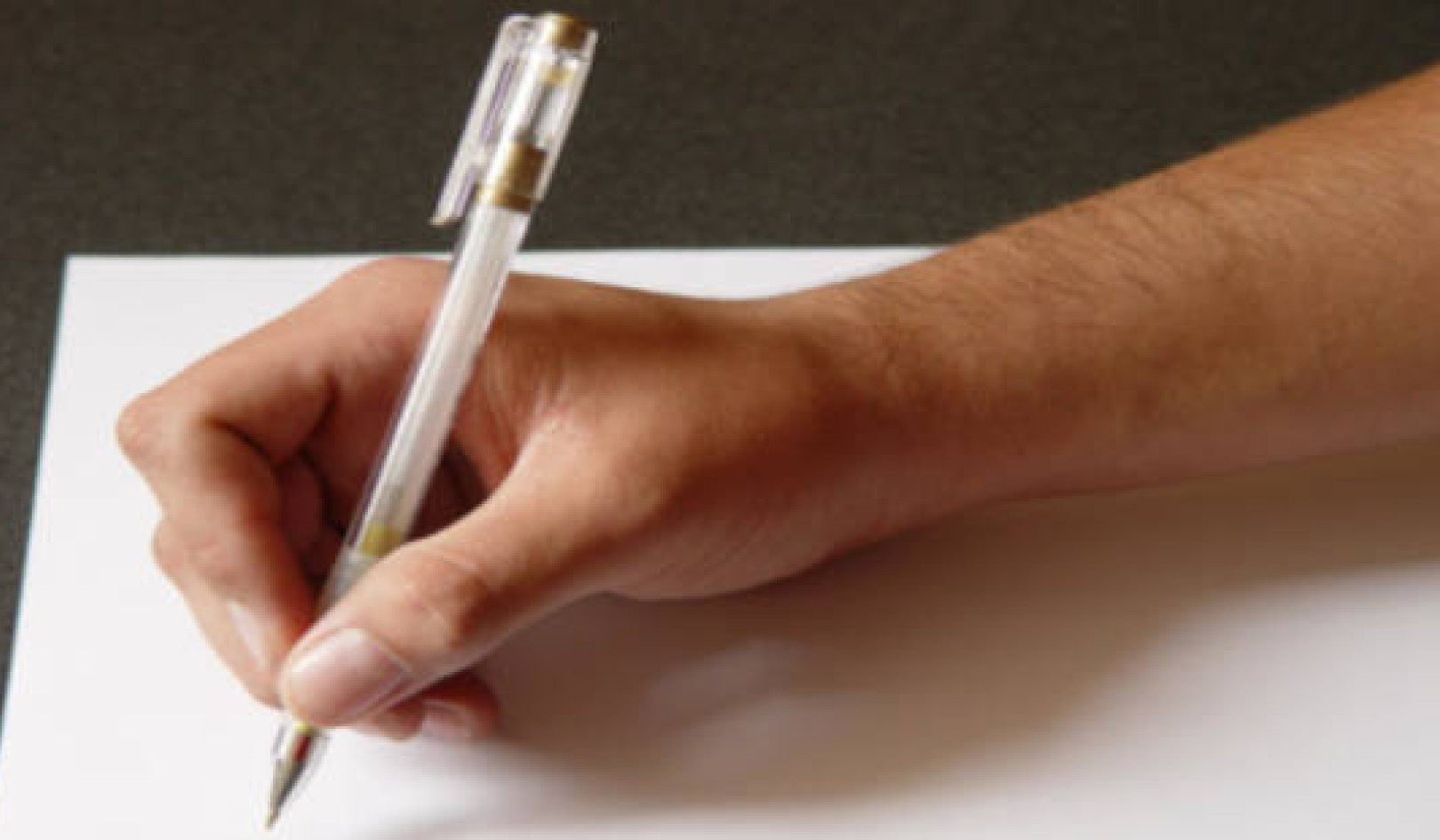
The right attitudes constitute only the beginning of the spiritual journey, though to perfect oneself in them requires the effort of a lifetime, and encompasses the entire spiritual journey. Not only is right attitude necessary for achieving perfection in meditation: It also can be perfected only in meditation.
What, then, is meditation? Here is a good definition: Meditation is listening. It is listening not only with the ear, but with the soul—not only to sound, but to the silent language of inspiration.
"Listening" itself, as I use the word here, entails much more than listening with the ears. It means, among other things, the stillness of expectation, and complete mental absorption in whatever inspirations come. It means receiving, as opposed to generating uplifting thoughts with the mind. It includes all of these, while providing to each of them a deeper dimension.
For in fact there is, literally, an inner music which, when heard, removes the mind from all worldly concerns, and banishes the delusion of any existence outside the Self. As Paramhansa Yogananda put it in Autobiography of a Yogi, "A truth cannot be created, but only perceived."
Mental Restlessness & Worldly Desires are Obstructions to Divine Grace
Divine grace is forever impersonal. It is not, like the human will, dependent on personal choices or inclinations. It has no favorites. Like the sunlight, it shines impartially everywhere. What keeps the sunlight from arriving equally everywhere is the presence of obstructions: clouds, buildings, the curtains covering a window. What keeps grace from reaching us is obstructions in our consciousness.
We may not be able to do much about obstructions to grace that, like clouds and buildings, are put there by Nature or by other people—illness, for example, or negative thought forms—but we can draw back the curtains that cover the windows of our own minds. These obstructions are our mental restlessness and worldly desires.
This, then, is the benefit of yoga practice: It draws back our mental curtains; it helps us to listen more intently to the divine call within. It is—to use another illustration—like turning the chalice of thought and feeling right-side up, that the wine of grace may fill it. If, instead, the chalice is turned upside down, grace, which (unlike the sunlight) is superconscious, will simply be withheld. Why should it spill uselessly to the floor?
Right Attitude for Meditative Listening: Physical Stillness
This stage of meditation is to prepare the mind for meditative listening. Even in normal concentration, physical stillness is necessary. When a person shoots a rifle, he must hold his hands and his body still. If a shot is particularly difficult, he must even hold his breath.
A photographer, when "shooting" a photograph at a slow exposure, must hold himself—his hands, his body, even his breath—completely still.
Similarly, whenever we need to listen carefully, especially if the person we're listening to is speaking very softly or at a distance, we naturally hold our bodies very still, and breathe as little and as quietly as possible.
For meditation, the first requirement is to keep the body motionless—even, as much as possible, to still the breath. How to accomplish this stillness of the breath? I'll discuss this point later. The question now before us is the first one: how to still the body.
Keep it relaxed. To quiet the body forcibly is to focus the mind on it, instead of on superconsciousness. What we must do is transcend body-consciousness, that our listening become a process of total absorption.
Right Posture for Meditative Listening: Keeping the Spine Straight
The next requirement for right posture—the only other requirement, in fact—is to keep the spine straight and erect. To meditate, it is essential to sit erect with a straight spine. An erect spine aids us in raising our consciousness, permitting the energy to flow freely toward the brain. An erect spine also induces a positive attitude, without which it is easy, in the meditative peace, to sink into subconsciousness.
I once saw an advertisement for a meditation teaching. The "meditator" was leaning back comfortably in a "Lazy Boy" chair. His eyes were closed; his feet, propped up. The teaching that was being promoted can only have been a prescription for mental meandering!
The yoga teachings tell us to eschew idleness. They insist, therefore, on a posture conducive to mental vigor, that at the same time assists in releasing the energy to flow upward.
A number of positions are traditionally recommended for meditation. None of them is remotely similar to the illustration in that advertisement, for they all promote an attitude of alertness, of "meaning business" in one's quest for enlightenment. You will find them described in many books on yoga, including one of my own, published in 1967 and still in print: Yoga Postures for Higher Awareness.
Whether or not you yourself practice the hatha yoga postures is a personal decision, and depends largely on how much time you have to devote to spiritual practices. Remember only that it is meditation, above all, that will satisfy the needs of your soul.
 The classical yoga positions for meditation are beneficial for several reasons. First, they hold the body steady. Second, they gently press on certain nerves, and thereby help the meditator to achieve physical calmness. Third, they assist in raising the energy toward the brain, and prevent an excessive amount of blood from accumulating in the legs. Finally, they prevent the meditator from falling over during ecstasy, and perhaps getting hurt, as the mind and energy withdraw from body-consciousness.
The classical yoga positions for meditation are beneficial for several reasons. First, they hold the body steady. Second, they gently press on certain nerves, and thereby help the meditator to achieve physical calmness. Third, they assist in raising the energy toward the brain, and prevent an excessive amount of blood from accumulating in the legs. Finally, they prevent the meditator from falling over during ecstasy, and perhaps getting hurt, as the mind and energy withdraw from body-consciousness.
Alternative Position to Traditional Lotus Posture
For Westerners, Paramhansa Yogananda recommended an alternative position. It lacks some of the above benefits, but compensates for this lack by giving meditators, Westerners particularly, a position in which they can relax more easily, without having their attention drawn to the pain in their knees.
1) Sit on a straight-backed, armless chair (you may prefer one with a padded seat), at a height convenient for placing your feet flat on the floor.
2) On the chair, extending onto the floor in front of it and up over the back of the chair, place a woolen blanket. The purpose of the blanket is to insulate your body from certain downward-pulling currents in the earth that are apart from the pull of gravity. If you'd like even better insulation, cover the blanket with a silk cloth.
3) Sit away from the back of the chair. Keep your spine straight, your elbows and shoulders back (drawing the shoulder blades slightly together), and your chin drawn slightly in, parallel to the floor.
4) Place your hands palms upward on the thighs at the junction of the abdomen.
RELAXATION EXERCISE: Relaxing the Body of Lingering Tension
To relax the body, bear in mind that it may hold many knots of tension of which you are not consciously aware. The way to release those lingering tensions is to increase the tension first, deliberately:
1) Inhale. Tense the entire body until it gently vibrates. Then throw the breath out forcibly and relax. Practice this exercise two or three times. Then concentrate deeply on the sense of peace and freedom that permeates your body.
2) Next, for even deeper relaxation, inhale slowly counting mentally to twelve; hold the breath counting to twelve. Exhale again, counting to twelve. Practice this exercise six to twelve times.
This practice can also help us to achieve release from mental and emotional pain. The stress that accompanies such pain usually produces physical tension. By relaxing the body, as outlined above, then extending the thought of physical relaxation to the release of tension in the mind and in the emotions, we can achieve mental and emotional tranquillity with the release of tension in the body.
Whenever you feel anxious or fearful about anything, or distressed over the way someone has treated you, or upset for any reason, inhale and tense the body. Bring your emotions to a focus in the body with that act of tension. Hold the tension briefly, vibrating your emotions along with the body. Throw the breath out, and, keeping the breath exhaled as long as you can do so comfortably, enjoy the feeling of inner peace. Remain for a time without thought.
When the breath returns, or when thoughts once again bestir themselves in your mind, fill your brain with some happy memory that will provide an antidote to your emotions. Concentrate for several minutes on the happiness of that memory.
Throughout this process, look upward, and mentally offer yourself, like a kite, into the winds of inner freedom. Let them sweep you into the skies of super-consciousness.
VISUALIZATION EXERCISE
After practicing the relaxation exercise as described above (tensing and relaxing the body, then taking several deep, slow breaths to a rhythmic count) visualize yourself surrounded by infinite space. Vast emptiness stretches before you—below you—behind—above.
After some time, concentrate on your body. Release into vast space, like thin wisps of vapor, any lingering tension in the muscles.
Release your awareness of the body. It, too, is becoming part of the vast emptiness all around you.
Now, bring that feeling of space upwards in the body—from the feet to the calves, the thighs, the hips and buttocks, the abdomen, the hands, forearms, and upper arms, the back, the chest, the neck and throat, the tongue and lips, the facial muscles, the eyes, the brain, the very top of your head.
This body is no longer yours. You are the essence of which it is but an expression—the subtle consciousness of absolute peace that permeates all things, but that is untouched and unaffected by anything.
Reprinted with permission of the publisher,
Crystal Clarity Publishers. ©2000, 2008. www.crystalclarity.com
Article Source
Awaken To Superconsciousness: How to Use Meditation for Inner Peace, Intuitive Guidance, and Greater Awareness
by J. Donald Walters (Swami Kriyananda).
 Here is a fresh, revolutionary approach to finding inner peace and expansive joy, presented by one of the greatest exponents of yoga and meditation alive today. Through meditation, chanting, affirmation, and prayer, Swami Kriyananda, disciple of Paramhansa Yogananda, teaches us how to reach the superconsciousness successfully and regularly and how to maximize its beneficial effects.
Here is a fresh, revolutionary approach to finding inner peace and expansive joy, presented by one of the greatest exponents of yoga and meditation alive today. Through meditation, chanting, affirmation, and prayer, Swami Kriyananda, disciple of Paramhansa Yogananda, teaches us how to reach the superconsciousness successfully and regularly and how to maximize its beneficial effects.
Info/Order this book (newer edition - different cover)
About the Author
 J. Donald Walters (Swami Kriyananda) has written over eighty books and edited two books of Paramhansa Yogananda's which have become well known: The Rubaiyat of Omar Khayyam Explained and a compilation of sayings of the Master, The Essence of Self-Realization. In 1968 Walters founded Ananda, an intentional community near Nevada City, California, based on the teachings of Paramhansa Yogananda. Visit the Ananda website at http://www.ananda.org
J. Donald Walters (Swami Kriyananda) has written over eighty books and edited two books of Paramhansa Yogananda's which have become well known: The Rubaiyat of Omar Khayyam Explained and a compilation of sayings of the Master, The Essence of Self-Realization. In 1968 Walters founded Ananda, an intentional community near Nevada City, California, based on the teachings of Paramhansa Yogananda. Visit the Ananda website at http://www.ananda.org






























